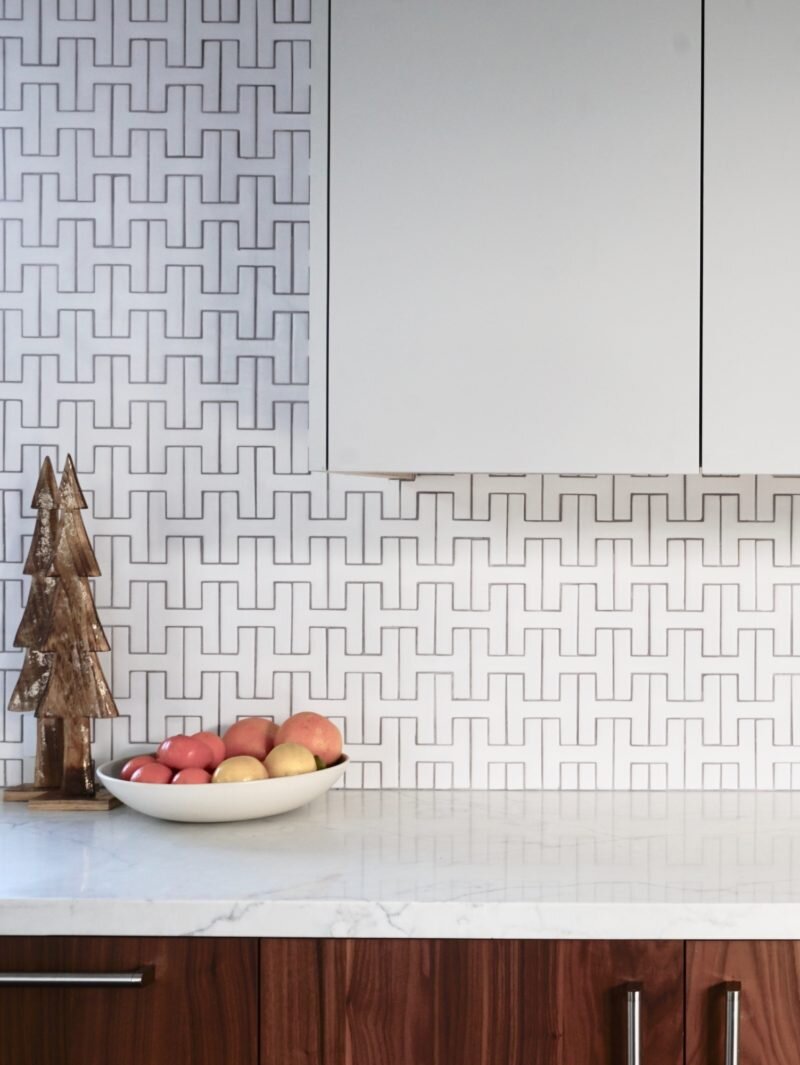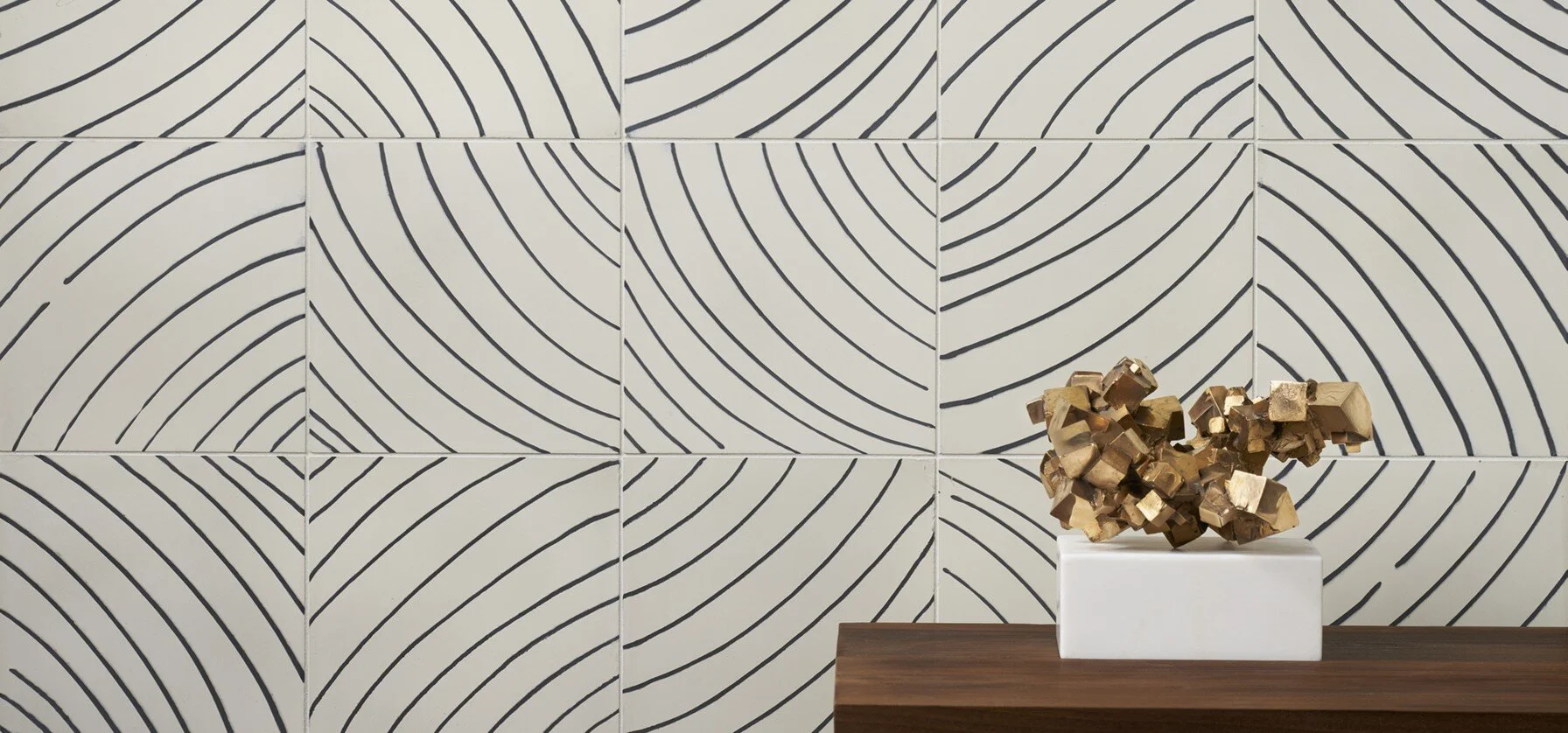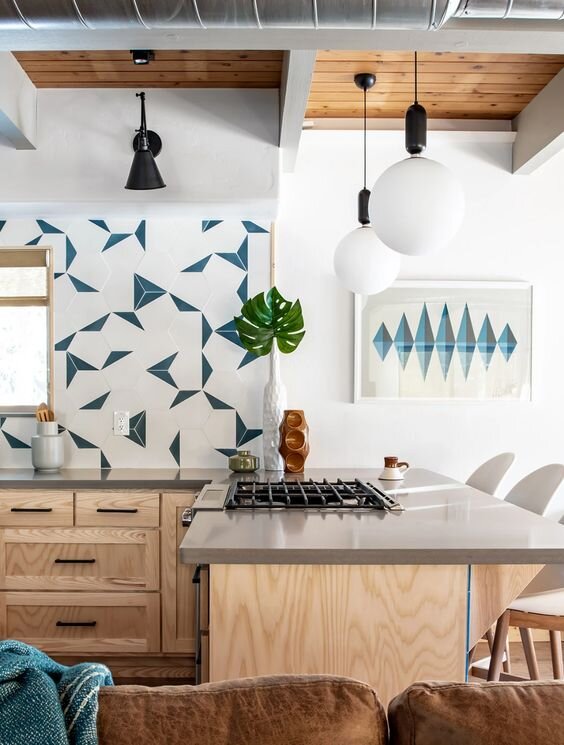Artisanal Tile for your Kitchen Backsplash
As the world becomes more comfortable again with pattern and color, we are breaking the mold of a neutral kitchen that works with everything. While natural marble or stone backsplash will always be the symbol of classic luxury, you can create a vibrant, more personalized feel in your kitchen with hand crafted materials. If you’re considering a kitchen remodel, and you’re overwhelmed with the plethora of artisanal backsplash options out there, this blog post will simplify the aesthetics to help you pinpoint what it is that you are drawn to.
Artisanal tile is handmade and hand painted or glazed. So it is inherently rich in variation of hue. Most people are immediately mesmerized with its highly nuanced characteristics. For others, it can take time to appreciate the beauty of imperfection, especially since we have grown accustomed to precise manufactured tile. They might not be for you if your eye seeks a perfectly uniform look. But just as with anything handmade, these tiles elicit an emotional response from knowing they were crafted by actual humans!
As a designer, there is a lot of thought that goes into selecting & specifying this type of tile. For the client, there are 2 main elements to focus on: Tile Shape & Color.
Single color + pattern created from tile shapes
If you want to maintain a monochromatic backsplash, you can look at forming bold patterns using a singular color as in the images directly below. Yes, you have to love the color; but most people do have a favorite color. And it could be a neutral color! With a variety of shapes and colors available, it is a great way to create a customized look for your kitchen.
Via Heath Ceramics
Designer: WWFF Design
Via Fireclay Tile
Designer: Form + Field
The beauty of handmade tile is that due to the subtle variation in color, even neutrals can shine as the light catches these nuances and lends depth to the overall picture. If you are drawn to clean neutrals, you still can personalize you backsplash with the shape of the tile you select. The firs image below shows a blend of neutral colors in an organic tile shape. The rectilinear tile in the second image is actually just one color, but it still has a lot of inherent variation.
Via Heath Ceramics
Designer: Irwin Johnson
Via Fireclay Tile
Designer Claire Zinnecker Design
Grout Color
While grout color is always important, it is especially important with monochromatic tiles laid out in a graphic pattern! A contrasting grout color makes the pattern pop. It celebrates the pattern so that you read each tile as an individual component of the whole; like the pieces of a puzzle. Picking a grout color that is close in value to the tile color makes for a wall that is less busy, less dramatic and more calming. There is absolutely no right or wrong here. It is subjective and a great way to lend your personal aesthetic to your kitchen! Below the same tile is used with different grout selections - what a difference!
Patterned Tiles
Patterned tiles are gaining popularity. Each tile comes in 1 pattern configuration. The tiles are then laid out to create personalized patterns - whether completely abstract or in a set pattern repeat.
In general, when you mix color and pattern, there’s definitely more of a sense of movement; more drama. The wall is treated as art.
In addition to ceramic, encaustic and concrete tiles have become more popular as a way of introducing color and pattern. However there are important considerations for application.
Ceramic tile (in images above) usually has a layer of thick glaze on top after it’s been fired at kiln temperature which creates a much more impervious barrier and protection against spills. Concrete tile (2 images directly below) is cured at room temperature with a much thinner top layer, and therefore, is much more porous.
Concrete tiles do have to be sealed so that they don’t absorb stains. But if you keep a clean kitchen and can deal with some maintenance, cement tiles introduce a whole new world of options. They’re quite unique as they will patina over time and develop character.
Via Ann Sacks
Via Popham Design
Envision the backsplash selection in the larger context
Something to keep in mind especially in an open floor plan is how the material selection for the kitchen backsplash sets the tone for the entire space. I look at this as an opportunity to let the backsplash be the main feature. The kitchen is the heart of the home and where most gatherings naturally gravitate towards. So why not let this space sing!
Via Clé Tile
Designer: Dana Jacks Designs
Via Fireclay Tile
Designer: Simply Grove
While a lot of people are attracted to the idea of a fun feature wall; they worry about making the right choice and committing to a long term design decision. If you are debating this topic at all, I encourage you to think of it as a favorite piece of art that you would never tire of!
Imagine how you will feel walking into your kitchen everyday. Think about the energy it will bring for you, your family and your guests. I hope I’ve inspired you to consider a bolder vision for your kitchen backsplash! If you need help narrowing down selections, I am just a call away!










